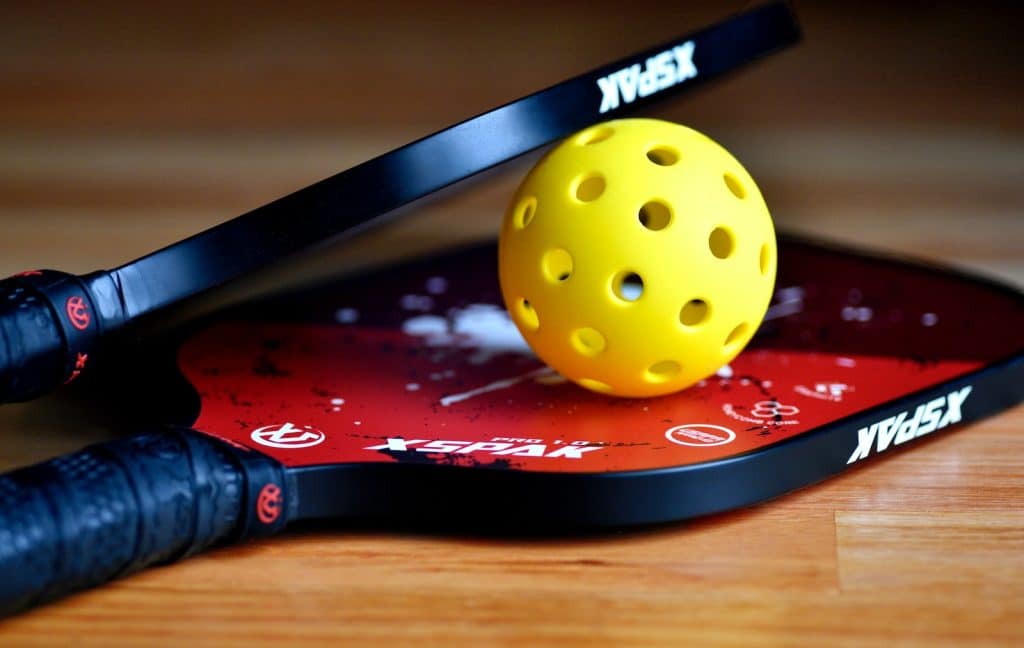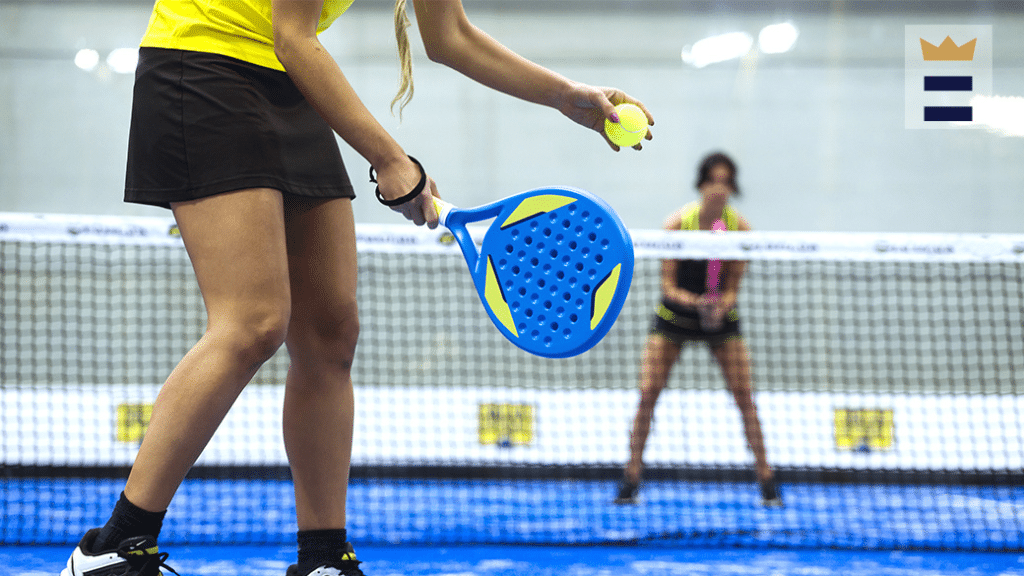Padel and pickleball may have awkward-sounding names, but these up-and-coming racket sports are taking the world by storm. Both combine elements of tennis, badminton, and squash into accessible and exciting games for players of all ages and skill levels. They have their origin stories on different continents – padel in Mexico in the 1960s, and pickleball in the state of Washington in the USA during the same decade. However, padel and pickleball remained obscure niche sports for years before their current explosion in popularity over the last decade.
Padel first began garnering attention in Spain and Argentina before spreading rapidly throughout Europe and Latin America. Pickleball’s epicenter is North America, particularly the USA, where it has become the fastest-growing sport with around 5 million players. Although rule variations exist, padel is almost exclusively doubles, while pickleball allows for both singles and doubles play. The smaller padel court enclosed by walls adds a unique twist not found in open pickleball courts.
Both upstarts have cultivated passionate, devoted followers who praise the sports’ merits of fun, fitness, and friendship. But fans often debate – which game reigns supreme? Is one game easier to learn than the other? How do the physical demands compare? As the rivalry between padel and pickleball intensifies along with their growth, understanding the key differences and similarities can help new players choose a side or even try their hand at both sports.
Table of Contents
What is Padel?
Padel originated in Acapulco, Mexico in 1969 when Enrique Corcuera decided to install a small tennis court at his home by enclosing an area with walls made of brick and concrete. He added metal fences along the walls and created openings at the service lines and baseline, essentially converting a tennis court into an enclosed playing area with accessible galleries for spectators.
Corcuera’s improvised court spurred the invention of the sport over subsequent years, as players began using plastic mesh walls instead of brick and modified tennis rackets that were lighter with holes drilled into the frame. Rules were formalized to accommodate the court layout and walls, including allowing serves to bounce once before play begins. By 1974, the first official padel court opened in Marbella, Spain which helped accelerate the game’s popularity in the country during the 1980s, especially on the resort town’s golf courses.
The standard padel court dimensions measure 10 meters wide by 20 meters long – slightly smaller than a tennis court. The four enclosing walls and mesh fencing make a unique playing arena that adds speed and unpredictability as the ball ricochets off the sides. The key rule differences from tennis include allowing the ball to bounce once before returning serves, permitting contact with the walls during play, and only allowing one bounce on each side before a point ends.
The paddles used are also distinct from other racket sports with sporting goods brands Head and Wilson among the most popular manufacturers. Padel racquets feature holes drilled throughout and have a cord strung loosely through them. These innovations allow greater ball control with spin as players can squeeze the paddle to “bite” and add revolution. The balls used have lower pressure than tennis to increase speed which further accentuates padel’s frenetic, action-packed points.
What is Pickleball?
The beginnings of pickleball have multiple origin stories, tracing back to the summer of 1965 on Bainbridge Island, Washington. The most frequently cited account credits Joel Pritchard, later a U.S. Congressman, and his friend Bill Bell who improvised equipment to invent a tennis-like game to entertain their bored kids. The odd name? No one knows for sure but Pritchard’s wife Joan is thought to have remarked the made-up sport reminded her of “the Pickle Boat” in crew races where oarsmen were chosen from leftovers.
Using ping-pong paddles and a perforated plastic ball, pickleball was first played on a badminton court with adjusted tennis nets. The game evolved with wooden paddles becoming standard along with Wiffle balls before specialized composite pickleball paddles were manufactured in the 1980s as its popularity grew. IFP-approved balls are now made of plastic resin with designs for indoor or outdoor play. Courts remain similar to badminton dimensions at 20×44 feet while the net lowers to tennis height at 36 inches.
Singles and doubles matches are played first to 11 points, winning by at least a 2-point margin. Pickleball’s rules blend aspects of tennis, badminton, and table tennis, allowing groundstrokes, volleys, overheads, and angled shots combining paddling and striking skills. The unterminated points and strong net play reward quick reflexes. Lower net height also means players of all ages can rapidly pick up the game, leading to its viral spread at community parks and purpose-built facilities, especially amongst active adult communities in North America.
From the homemade equipment used by its inventors in the 1960s to the current high-tech paddles and tournaments awarding prize money, pickleball has captured the public’s imagination with its friendly vibe and accessibility leading many to describe the sport as “addicting fun”. Estimates count at least 5 million pickleball participants, with exponential annual growth showing no signs of slowing down.
Key Differences Between Padel and Pickleball
Padel and pickleball share similarities but have distinct traits that give each sport its unique rhythms and strategies. Some of the notable differences include:
Court Size and Layout
The padel court measures 10 x 20 meters compared to a pickleball court spanning 13.4 x 6.1 meters. Padel’s dimensions make for a more closed, smaller space with the walls intensifying rallies. Pickleball’s longer court allows more baseline play. Padel is fully enclosed while pickleball is open.
Equipment
Padel racquets have holes drilled throughout with loosely strung cord to enable spin generation. Pickleball paddles resemble oversized table tennis paddles with indentations and smooth polymer faces to balance power and control. The perforated, lower pressure padel ball accelerates off walls increasing speed. Pickleballs also have holes for some bounce.
Gameplay Dynamics
Padel permits wall and fence rebounds during rallies, unlike pickleball. The enclosed padel court concentrates play with more rapid volleys. Courtside galleries in padel also intensify audience participation. Pickleball’s dimensions facilitate baseline rallies and swings requiring less reflex hustle.
| Feature | Padel | Pickleball |
|---|---|---|
| Court | Enclosed, 20m x 10m with walls | Badminton-sized, 13.41m x 6.09m without walls |
| Ball | Depressurized tennis ball | Perforated plastic ball |
| Equipment | Solid racket with stringless face | Solid paddle with flat face |
| Gameplay | Tennis-like scoring, underarm serve, walls play an active role | Tennis/badminton scoring, “double bounce” rule in non-volley zone |
| Pace | Fast-paced, athletic, rallies can be long | Moderate pace, good for all ages and skill levels |
| Social aspect | Primarily doubles, tactical and strategic | Doubles or singles, focus on volleys and quick reflexes |
| Skill level | Higher learning curve due to walls and tactics | Easier to learn fundamentals, slower progression |
| Fitness | High calorie burn, demands agility and speed | Moderate calorie burn, good for beginners and seniors |
| Accessibility | Growing rapidly, but court availability may be limited | Widely available, often at public parks and recreation centers |
| Cost | Higher equipment and court fees due to specialized facilities | Lower equipment and court fees, often included in community center memberships |
Similarities Between Padel and Pickleball
While having distinct traits, padel and pickleball share qualities that make them accessible and enjoyable for recreational players.
- Both sports are doubles focused, which facilitates social connections.
- The learning curves enable newcomers to quickly pick up basic strokes and strategy.
- Gentler learning curves also allow wider age ranges to play together.
- Games emphasize shot placement and finesse over power.
Padel vs. Pickleball: Physical Demands
The contrasting court dimensions, gameplay dynamics and equipment in padel and pickleball translate to different athletic demands.
- Padel’s rapid exchanges across a compact court prompt more high-intensity interval running. Pickleball sees longer points with court coverage.
- Padel puts a premium on reaction times to abruptly changing ball trajectories off walls, playing doubles. Pickleball requires good mobility, but not as quick reflexes.
- Padel’s walls add more unpredictability, requiring flexibility to stretch and change direction. Pickleball offers more rhythm from baseline rallies.
- While padel emphasizes spin generation with paddle and ball designs, pickleball rewards smooth groundstrokes and low skidding shots.
The variety keeps both sports challenging and engaging, activating different athletic attributes. Ultimately, padel favors agility, while pickleball rewards consistency.
Accessibility and Popularity
A major reason behind the rising popularity of both sports is their accessibility to a wide span of ages and skill levels.
- Padel and pickleball both accommodate players ranging from school-aged children through seniors. The rules and equipment allow for modified play scaling difficulty.
- Gentler learning curves translate to quick rewards and enjoyment for novice players. Beginners can rapidly pick up basic strokes and strategy to competently play a game.
- The social nature centered around doubles builds camaraderie that facilitates retention.
In terms of growth:
- Pickleball currently counts at least 5 million dedicated participants in North America. The USA Pickleball Association’s membership alone grew over 25% year-over-year by 2022.
- As the progenitor country, Spain accounts for most of the 15 million global padel participants. But participation outside Europe and Latin America is accelerating quickly.
- Construction of dedicated pickleball and padel courts continue to expand exponentially, facilitating access. Enthusiast camps, clinics, and academies are also proliferating.
Both sports benefit from enthusiastic, welcoming cultures that appeal across generations. The pandemic was an additional growth catalyst. And headline-grabbing celebrity investors and endorsements further validate padel and pickleball as more than passing fads.
Which is Better – Padel or Pickleball?
While some heated arguments persist in the “battle of the paddles”, there is room for both padel and pickleball to continue thriving. Padel offers a more frenzied finesse game packed with reaction sprints and wall ricochets inside a compact arena. Pickleball promotes free-flowing rallies focused on shot consistency across its bigger court. The commonalities center around delivering fun, social exercise through easy learning curves.
Ultimately padel and pickleball both achieve their aims to foster positive communities growing at impressive rates. Players can decide which game better matches their athletic attributes and interests. Or enthusiastically take up both sports to reap expanded fitness gains and enjoyment. With dedicated facilities and equipment advancing to meet swelling demand, padel and pickleball have secured solid status as more than passing fads. Expect visibility and participation in both pastimes to continue rising for the foreseeable future.



